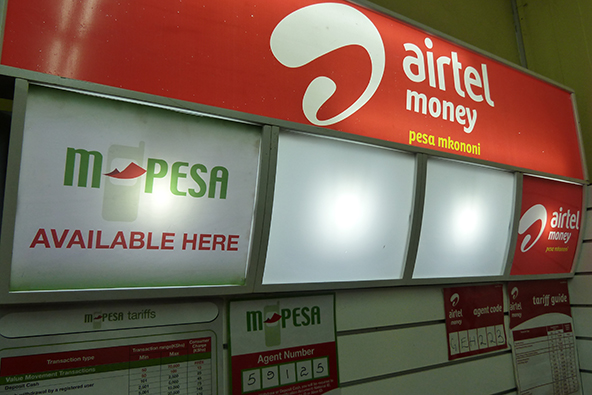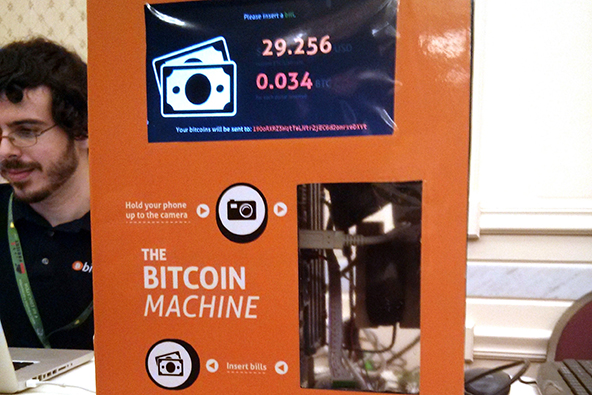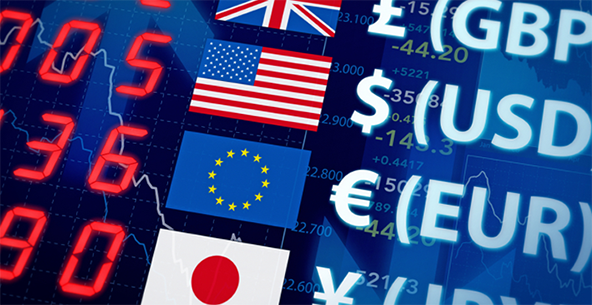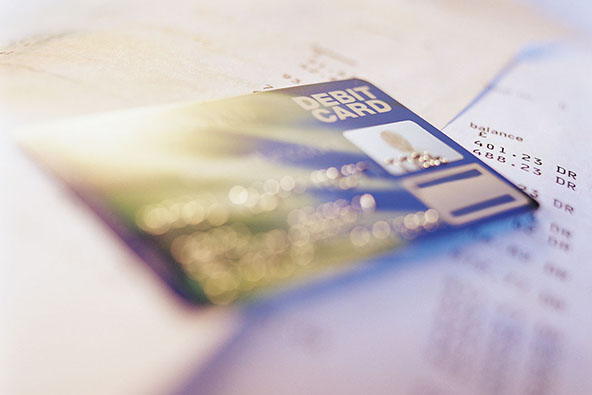Leave M-Pesa Alone

Two news articles about M-Pesa this morning are offering very different perspectives on Kenya’s hugely successful mobile money transferring service and on the fledgling industry it helped create as a whole. Whereas The BBC’s Peter Day is praising the positively transformative effect that M-Pesa has had on Kenya’s and other developing countries’ economies, QZ.com’s Josh Meyer is worried that criminals are using the service for money laundering, bribing, facilitating kidnapping and extortion and “a range of other crimes”.
This ambivalence about the merits of mobile money transfers is nothing new — people have always been fascinated by the new industry’s potential, just as many of them have been concerned with the accompanying side effects. But I think it is clear that today, six years after M-Pesa opened for business in Kenya, the good it brought to the lives of millions of people in mostly rural areas in poor countries in Africa and Asia vastly outweighs the potential for abuse it may have created. So I think that, while Meyer is correctly identifying the risks associated with M-Pesa-like mobile transfer services, the strict regulation he implicitly advocates would do more harm than good.
The M-Pesa Effect
Both Day and Meyer (and especially the former) are praising the prosperity M-Pesa brought to Kenya. Peter Day describes Nairobi, Kenya’s capital, in 2007 (the year M-Pesa was launched) as “a rather provincial city: nice climate, nice people, a dark underside of criminality, but a bit slow”. Six years later, however, he sees signs of prosperity everywhere, of which, as he observes, the capital’s now “notably dreadful” traffic is immediately indicative:
Prosperity brings cars, and cars clog the place up, as they do almost everywhere else in the developed and developing world.
As both authors point out, in just six years M-Pesa has grown to a huge size. Here is Day, whose account on this point is more accurate:
Six years after it launched, M-Pesa now has more than 17 million users, half the total Kenyan population. They undertake millions of transactions a month, buying credits from a dense network of 65,000 Safaricom agents who also sell the phone credits you need to use the phones (most Kenyan mobile phones are financed on pay-as-you go).
The transactions add up to one third of Kenya’s total GDP.
Naturally, a company of this size would have an effect on the whole economy and M-Pesa is certainly no exception. In fact, the mobile money transfer service is the main force behind the transformation of Nairobi into Africa’s “Silicon Savannah” — a place where the start-up scene is booming and where, as The Economist told us some time ago, exports of technology-related services have exploded from “a piffling $16m” a decade ago, when Kenya was a “technological backwater”, to $360 million in 2010. Then in the first two years of the present decade, Kenya’s “quiet tech boom” has given rise to the emergence of hundreds of new start-ups in Nairobi. And this can all be traced back to M-Pesa’s launch in 2007, for the “Silicon Savannah” start-ups are using M-Pesa as “a base for their business”. Here are a couple of examples given in The Economist’s piece:
One team streamlined the payment of school fees through the service [M-Pesa] by helping institutions and parents keep track of upcoming and late deposits. Another offered an electronic version of Kenya’s popular informal savings groups. M-PESA has also inspired others. In May Google launched Beba, a pre-paid card for commuters using Nairobi’s local buses. Insiders say that this is a test run for a much larger cashless-payment system.
Crucially, M-Pesa’s success was made possible by favorable regulatory environment in Kenya, as pointed out a year ago by Wolfgang Fengler, the World Bank’s Lead Economist in Kenya:
The Central Bank in particular played a very progressive role and allowed “regulation to follow innovation”, while reassuring the market of its oversight. The regulator agreed that mobile money agents needed only limited requirements to enter the business, as they were not providing banking services, while the operator behaved as if it was regulated and periodically reported financial and usage data as Banks do.
That has not been the case in other countries. In Nigeria, for example and as Day says, bank regulators are reluctant to permit M-Pesa-like money transfers. Yet, The Central Bank of Nigeria (CBN) is taking steps toward closing the technological gap with Kenya. Recently, the CBN launched the “Cash-less Lagos” project, where a “cash-handling charge” will be assessed on cash transactions above a certain minimum, with the stated objective of “reducing (NOT ELIMINATING) the amount of physical cash (coins and notes) circulating in the economy”. The CBN hopes that its initiative will in time lead to the replacement of cash transactions by mobile ones, presumably facilitated by an M-Pesa-type of service.
Then there is Zimbabwe, where hyperinflation has forced M-Pesa-type innovation:
In Zimbabwe, for example, American banknotes have largely replaced the hyperinflation-ravaged Zimbabwean dollar. American coins are scarce, however, so pretty much everybody in Zimbabwe transfers airtime in their place at least occasionally, says Oswell Binha, president of the Zimbabwe National Chamber of Commerce in Harare. Zimbabwean shoppers are tired of being given sweets in lieu of change, so shopkeepers who give airtime rather than yet another “$0.63-worth of chocolates” have a competitive advantage, Mr Binha says. Yo! Time, a Harare-based start-up that simplifies these retailer-to-shopper airtime payouts, processes more than 9,000 payouts a day for clients; six months ago the figure was 2,000.
But if M-Pesa is doing as well as it is, both in Africa and elsewhere, why are people so worried about its side-effects?
A System Breakdown
Here is how QZ.com’s Meyer sees the problem:
M-payments are most popular in countries with weak laws and enforcement against financial fraud and money-laundering. Customers often need little in the way of identification. The whole process often bypasses a country’s financial reporting system. That makes it almost impossible for authorities to monitor m-payments, even if they had the expertise–which, Cassara and others say, they don’t.
And because transactions are made via mobile phones and text messages, there’s usually no way to trace them, let alone secure evidence for prosecutions. As Cassara testified before Congress in May 2012, criminals always gravitate toward the weak link in the financial system, and they’ve now glommed onto m-Payments. In Kenya, M-Pesa has been used to launder fake currencies, to bribe corrupt officials, and to facilitate kidnapping and extortion and a range of other crimes.
Well, as I said, these are all legitimate concerns. But at least in the epitome of a country with “weak laws and enforcement against financial fraud and money-laundering”, M-Pesa has proved to be an unequivocal force for good. When it was first launched in Afghanistan in 2008, M-Paisa, as the service is named there, was used to pay policemen’s salaries. It is not known whether the initial objective was to use M-Paisa to fight corruption, but that ended up happening anyway. As Wikipedia says:
Soon after the product was launched, the Afghan National Police found that under the previous cash model, 10% of their workforce were ghost police officers who did not exist; their salaries had been pocketed by others. When corrected in the new system, many police officers believed that they had received a raise or that there had been a mistake, as their salaries rose significantly. The National Police discovered that there was so much corruption when payments had been made using the previous model that the policemen didn’t know their true salary. The service has been so successful that it has been expanded to include limited merchant payments, peer-to-peer transfers, loan disbursements and payments.
So while, as Meyer admits, “there isn’t much evidence of m-payments facilitating crime”, there is compelling evidence that M-Pesa and its offshoots have done a vast amount of good in poor and troubled places around the world.
The Takeaway
All that being said, I fully expect that national governments, as well as intergovernmental organizations, will soon start erecting a stricter regulatory framework around M-Pesa and its kin. We already know that the use of airtime as currency has attracted the attention of various authorities, for the reasons given by Meyer. I can only hope that, whatever new rules end up being introduced, they will take into account the good that tradable airtime does and do not end up destroying a fledgling industry that is improving the lives of so many people.
Image credit: Mobile Money Exchange.


